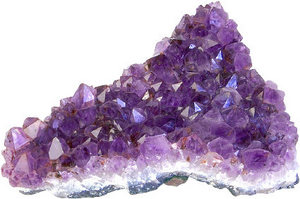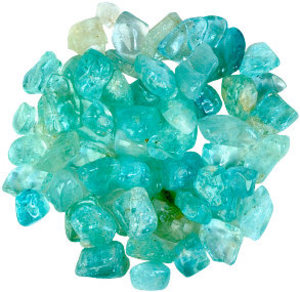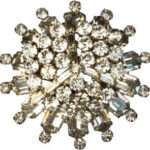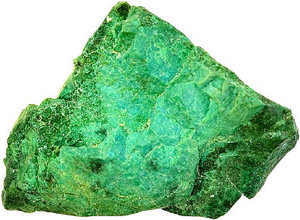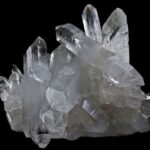Amethyst is the February birthstone. Associated with February since ancient times, amethyst is the most highly valued form of quartz. It is best known for its intense dark purple color.
Although amethyst can range from transparent light lavender to smoky violet to the deepest royal purple, darker colors are considered more valuable. According to Wikipedia, “Siberian” amethyst is the most prized color, an intense violet with deep red flashes. Birthstone jewelry made from the Siberian variety is often the most expensive.
Origin of birthstones
The origin of how stones came to be connected to specific months is cloudy. Some speculate the birthstone originates from Biblical times when a priest’s breastplate was adorned with twelve different colored gems. Over time, the number twelve became connected to months of the year and to the zodiac.
People began wearing a different gem each month as a sort of talisman, believing each stone held certain powers. Gradually, specific gems became attached to specific months and zodiac signs, and people then wore the gem associated with their birth month all year long.
Fast-forward hundreds of years to 1912 in Kansas City, Missouri. The American National Association of Jewelers created a birthstone list, assigning different stones to each month. The birthstone list was controversial because people thought it was purely for commercial purposes. Even so, it is accepted worldwide today as the definitive list of birthstones.
History of Amethyst
Popular with nobility through the ages, amethyst was considered more valuable than diamonds. The Greeks believed it protected them from intoxication, frequently drinking wine from goblets made entirely of amethyst. In fact, the word amethyst derives from “amethystos”, Greek for “not drunken”.
Ancient Egyptians believed amethyst could prevent poisoning, and it was a favorite crystal of Cleopatra. Many pharaohs were entombed with the purple crystal. Also, wealthy Egyptian rulers bestowed gifts of amethyst upon middle class citizens and farmers.
During the Renaissance, amethyst became a symbol of religious unification. It adorned crosses, rosaries, and rings used by bishops and priests. It was also popular with the common people as a symbol of piety and humility.
Healing Powers of Amethyst
Amethyst brings peace and calm, reducing anxiety and negativity. It is said to relieve the negative effects of depression, stress, grief, and despair. Amethyst can increase mental strength and help overcome personal struggles and difficulty with addictive behaviors. Ancient warriors believed it would make them victorious in battle.
To improve physical health, amethyst can be used as an elixir to treat toothaches and bone and joint disorders such as arthritis. It can improve blood disorders and balance blood sugar. This elixir also improves digestive health and strengthens the heart. Some believe it alleviates insomnia and other sleeping difficulties and can help reduce headache pain.
Geography of Amethyst
Amethyst is found worldwide. According to Simon and Schuster New Millennium Encyclopedia, the finest amethyst comes from Sri Lanka, India, and Brazil. There are several mining operations in Brazil, all of which produce February’s birthstone ranging from pale to medium lilac color.
One mine in Mexico produces what is called “highly saturated” deep purple amethyst. Crystals from this region have deeply colored interiors and transparent exteriors and are considered the most elegant of all amethyst.
In the United States, amethyst is found in several states: Montana, Colorado, Maine, Pennsylvanian, North Carolina, Georgia, Rhode Island, Texas, Arizona, and Virginia. Amethyst is the state gemstone of South Carolina. The American variety generally ranges from medium to deep color saturation and includes smoky and translucent varieties.
Other areas where amethyst is found include Uruguay, Africa, Scotland, Germany, Italy, Argentina, Bolivia, Madagascar, Canada, and Australia.
Care and Cleaning of Amethyst
Amethyst is sensitive to heat. In fact, very dark crystals are sometimes heated to enhance their color. If overheated, however, it can turn brownish-yellow, red, slightly green, or lose its color entirely. Sun will cause it to become paler. Store amethyst jewelry in a dark area to help it retain its original color.
To clean amethyst, use warm soapy water and a soft brush, or an ionic jewelry cleaner. Do not use steam and keep away from strong chemicals.
Known as the February birthstone, amethyst is the most prized form of quartz. It is found in a wide range of beautiful lavender, violet, and purple colors. Imbued with healing powers, religious symbolism, and a noble history, the birthstone amethyst remains popular today.
Sources: Simon and Schuster New Millennium Encyclopedia 2000; www.wikipedia.com, www.about-birthstones.com, www.jjkent.com, www.kingsjewelry.com, www.jsbeads.com, www.jewelrysuppler.com, www.bellaonline.com, http://starryskies.com
